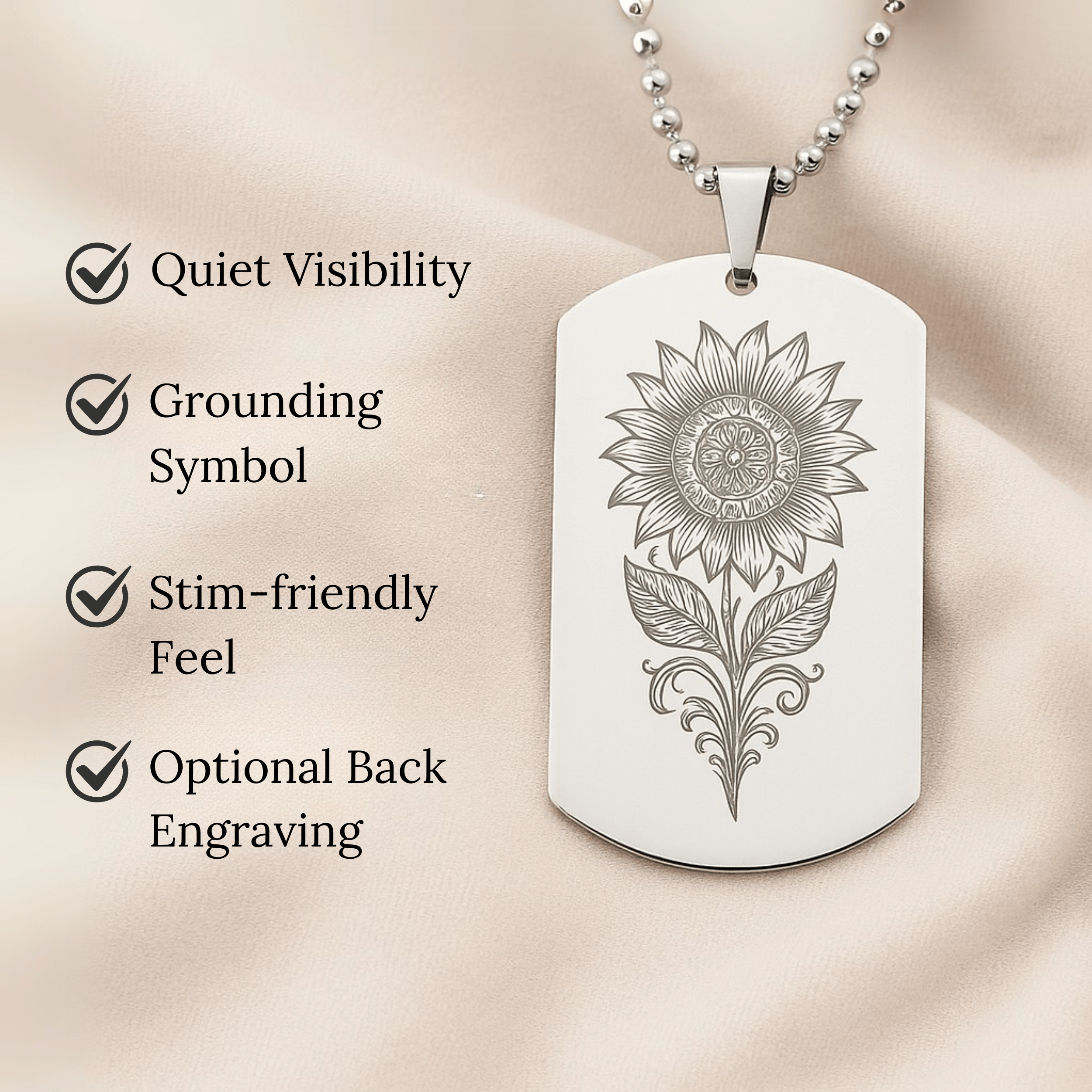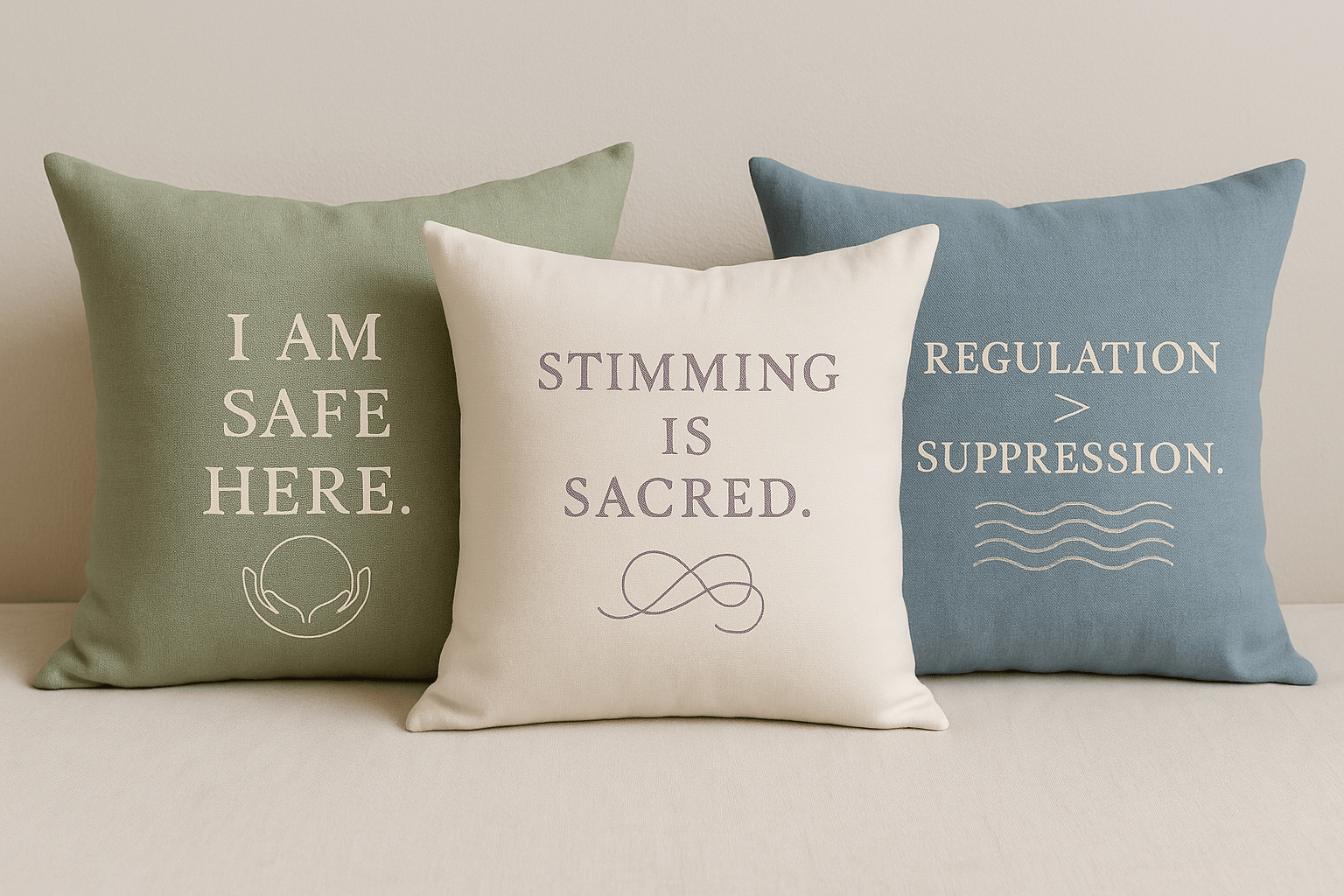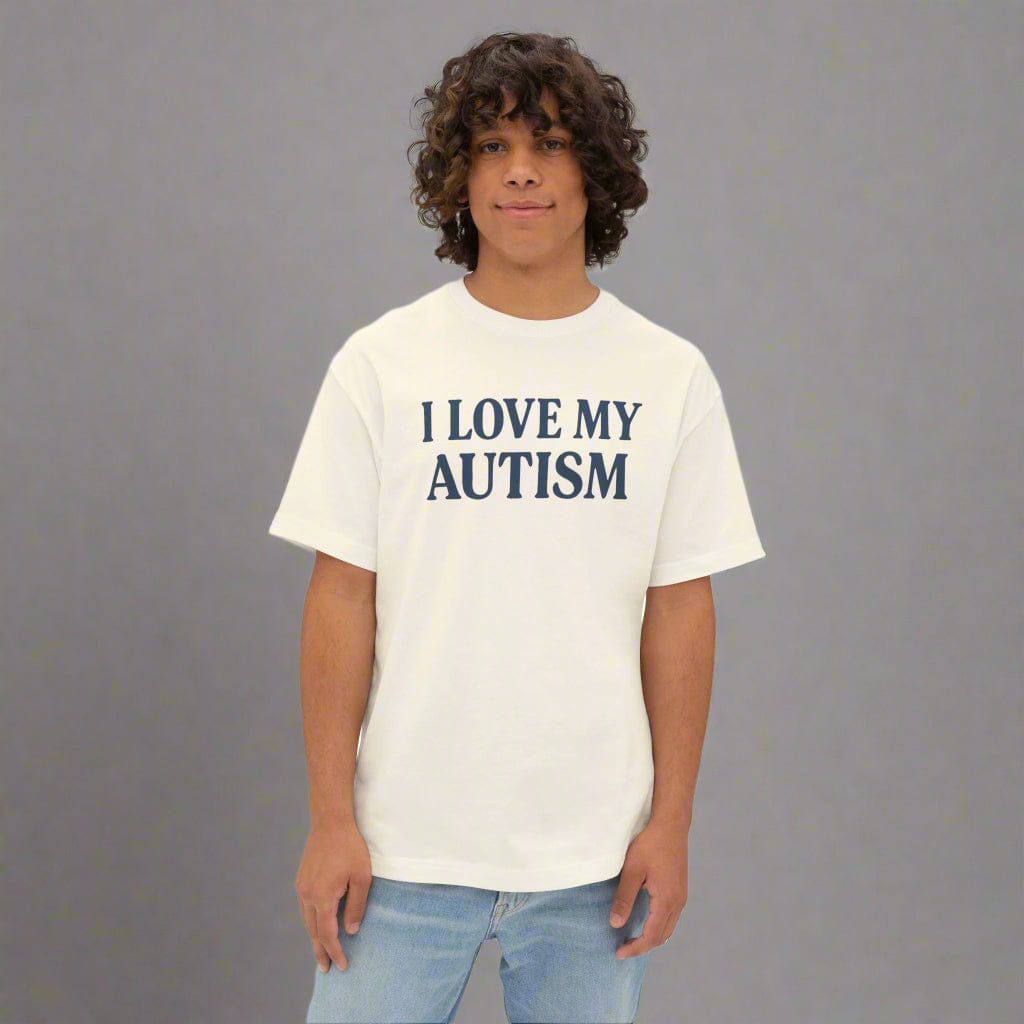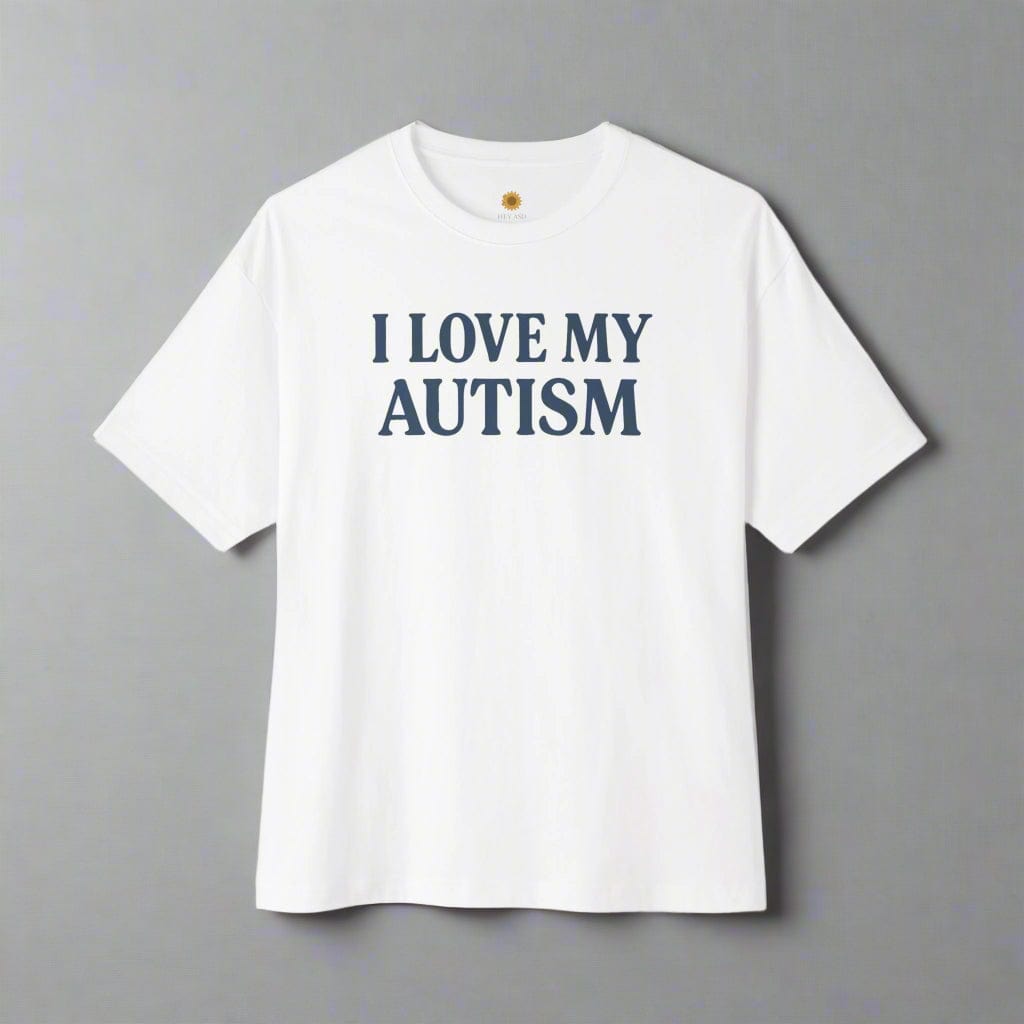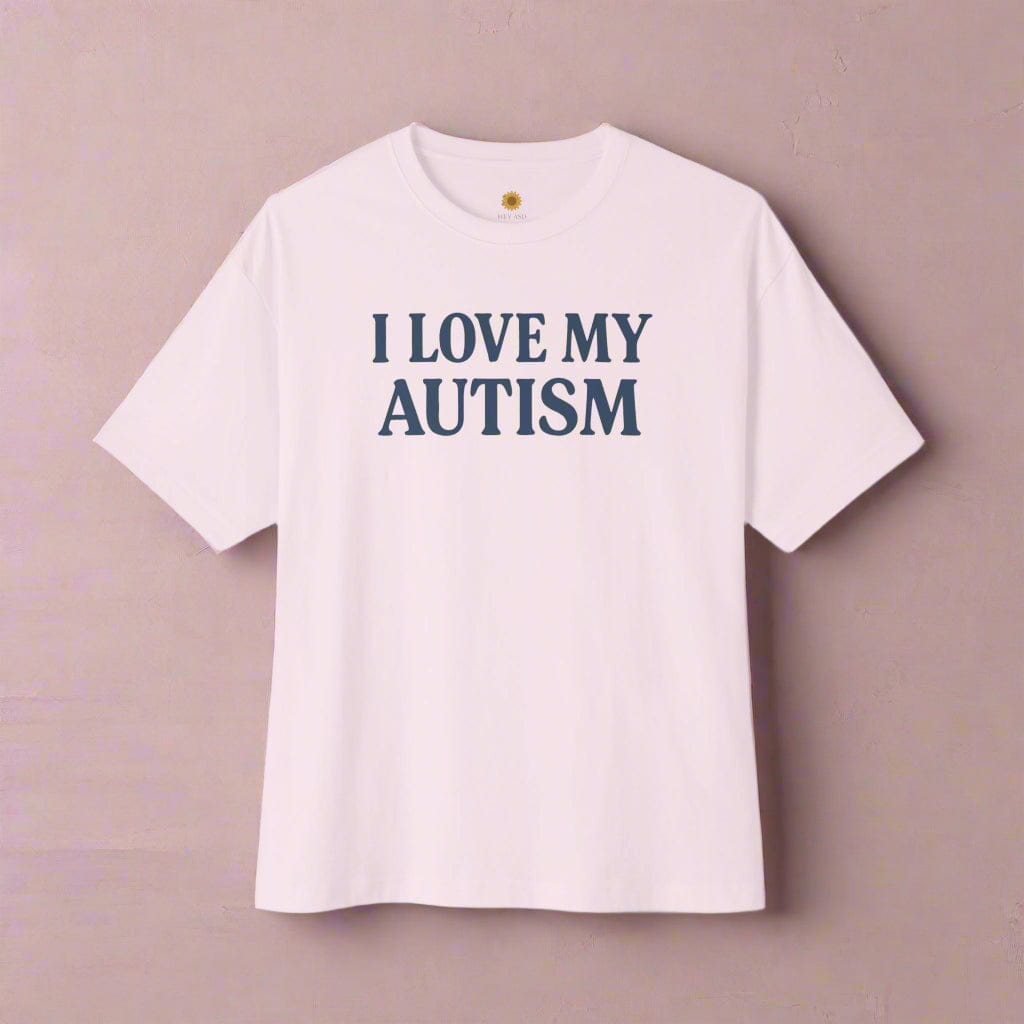Autistic Burnout 101: Signs, Symptoms, and How to Find Your Way Back

Written by the HeyASD Editorial Team
Have you ever felt like your spark has quietly faded, as if even simple things suddenly take all your strength? Many autistic adults describe this as more than tiredness — it’s a deep, whole-body shutdown where your energy, focus, and sense of self seem to disappear. This state has a name: autistic burnout.
Autistic burnout happens when constant stress, masking, and sensory overload push your nervous system beyond what it can sustain. It’s not a personal weakness or lack of resilience — it’s your body’s way of saying it needs care and safety. Understanding what autistic burnout looks and feels like is the first step toward finding balance again.
This guide will gently walk you through what autistic burnout is, the early signs to watch for, and what recovery can look like when you start giving yourself permission to rest. Whether you’ve experienced this before or are just beginning to learn about it, know that you are not alone — and recovery is possible.
Understanding Autistic Burnout: What It Actually Is
Autistic burnout is an intense state of physical, emotional, and cognitive exhaustion. It happens when the demands of living in a neurotypical world overwhelm your nervous system. For autistic burnout adults, this often results from chronic life stress, a mismatch of expectations and abilities, and inadequate support. This exhaustion can lead to a significant loss of skills and a reduced tolerance for daily life.
Unlike general stress, autistic burnout is deeply connected to your experience on the autism spectrum. It is your body’s way of saying it has carried too much for too long. In the sections that follow, we will explore the specific characteristics of burnout, how it differs from other conditions, and what causes it to happen.
Defining Autistic Burnout in Adults
For autistic adults, burnout is a syndrome defined by long-term exhaustion, a noticeable loss of function, and a decreased tolerance to stimuli. If you're wondering, "How can I tell if I am experiencing autistic burnout?" a key indicator is that this state typically lasts for three months or more, impacting every part of your daily life. It’s not just a bad week; it's a pervasive shutdown.
Many autistic people first experience this during major life transitions, like puberty or graduation, when expectations suddenly change. The loss of skills can be frightening, affecting everything from executive function to self-care. You might struggle with tasks you used to manage easily, leading to difficulties with independent living and a decline in self-belief.
Ultimately, autistic burnout is the result of your internal resources being completely exhausted without a chance to recover. It's a state of mental and physical fatigue that comes from years of trying to meet demands that are out of sync with your needs as an autistic person.
How Autistic Burnout Differs from Exhaustion, Fatigue, and Depression
While autistic burnout involves exhaustion and can have overlapping symptoms with depression, they are not the same. General exhaustion or fatigue is often resolved with rest. In contrast, the physical exhaustion from burnout feels deeper and doesn't improve with a good night's sleep. The emotional exhaustion is also distinct, often tied to specific environmental or social triggers.
Depression tends to flatten motivation and interest in all areas of life with a persistent sadness. Autistic burnout, however, can fluctuate. You might feel completely depleted after a day of social interaction but feel a bit better after spending time alone with a special interest. The core difference lies in the cause: burnout is a response to external pressures and overload, while depression is often more internally driven.
Recognizing these key differences is vital for finding the right support. While some symptoms may look similar on the surface, their origins and the paths to recovery are quite different.
|
Feature |
Autistic Burnout |
Depression |
|---|---|---|
|
Primary Cause |
Chronic stress from masking, sensory overload, and navigating a neurotypical world. |
Can be caused by genetic, biochemical, or environmental factors, often with internal emotional roots. |
|
Core Experience |
Pervasive exhaustion, loss of skills, and reduced tolerance to stimuli. |
Persistent low mood, feelings of worthlessness, and loss of pleasure in all activities. |
|
Recovery Path |
Requires reducing external demands, rest, unmasking, and sensory regulation. |
Often treated with therapy, medication, and behavioral activation (engaging in activities). |
|
Social Withdrawal |
A protective measure to escape overwhelming sensory and social input. |
Often stems from low motivation, lack of energy, and feelings of isolation. |
Why Burnout Happens: The Role of Masking and Sensory Overload
One of the most significant triggers for autistic burnout is chronic masking. Masking, or camouflaging your autistic traits to appear more neurotypical, requires immense mental and emotional energy. Suppressing natural behaviors like stimming or trying to navigate complex social demands day after day creates a level of chronic stress that is unsustainable. Over time, this constant performance drains your resources completely.
Another major cause is sensory overload. Living in a world not designed for autistic people means being constantly bombarded with stimuli. Noisy environments, bright lights, strong smells, and even the feeling of certain fabrics can be incredibly stressful. When you can't escape this sensory input, your nervous system becomes overwhelmed, leading directly to burnout.
These factors—along with unreachable expectations from others and a lack of accommodations—contribute to a cumulative load of stress. When you face these challenges without adequate support or the ability to take a break, your system eventually gives out. Burnout is the consequence of expectations far exceeding your capacity to cope.
Recognizing Early Signs of Autistic Burnout
Catching the early warning signs of autistic burnout can help you respond with compassion before it becomes debilitating. These signs often appear as subtle shifts in your tolerance and capacity to handle daily life. You might notice your executive functioning skills declining or that things you once enjoyed now feel like chores.
Paying attention to these initial signals is a form of self-care. It allows you to make adjustments, reduce demands, and give yourself the rest you need. Let’s look at some specific sensory, emotional, and behavioral clues that might indicate you are heading toward burnout.
Sensory Red Flags: When Everyday Life Feels “Too Much”
One of the first signs of burnout is a dramatic increase in sensory sensitivity. Yes, sensory issues absolutely worsen during autistic burnout. Environments and sensory experiences that were once manageable can suddenly feel unbearable. This is your nervous system signaling that it has no more capacity to filter sensory input.
You might find yourself needing more silence, solitude, or time in dark, quiet spaces to cope. The feeling of a clothing tag, a background conversation, or a particular smell might trigger a disproportionate level of distress. This isn't you being "too sensitive"; it's a clear sign of impending sensory overload.
Look out for these specific sensory red flags:
-
Ordinary lights, sounds, or textures becoming overwhelming or painful.
-
A strong urge to retreat from places with a lot of sensory information, like grocery stores or social gatherings.
-
Feeling physically unwell or agitated from sensory input you could previously tolerate.
Emotional Clues: Numbness, Flatness, and Loss of Motivation
Emotionally, early burnout often feels like a slow fade. You might experience a sense of being "flat" or emotionally numb, as if your feelings are muted. This emotional exhaustion is a protective mechanism—your brain is trying to conserve energy by dampening your emotional responses. This can be one of the key emotional symptoms adults show during autistic burnout.
A significant clue is a loss of motivation, even for your special interests or hobbies that usually bring you joy. When the things you love start to feel like a burden, it’s a strong indicator that you are overextended. Your capacity for emotional regulation may also decrease, leaving you feeling easily overwhelmed, irritable, or tearful for no apparent reason.
It is important to recognize these shifts not as personal failings but as data. Your emotional state is telling you that your reserves are low. This is a call to slow down and offer yourself gentle care, not to push harder.
Behavioral Changes: Avoidance, Forgetfulness, and Shutdowns
As burnout approaches, you may notice distinct behavioral changes. Social withdrawal is common; you might start avoiding phone calls, ignoring messages, or canceling plans because social interactions feel too draining. This isn't about not caring for others; it's about not having the capacity to engage.
Your executive function may also decline. This can manifest as increased forgetfulness, such as missing appointments or struggling to finish tasks. You might also experience more frequent shutdowns, where you lose the ability to speak or move, or find that your stimming increases as your body tries to self-regulate.
These behavioral shifts are not choices; they are signs of overload. Pay attention if you notice:
-
An increased need to be alone and a reduced capacity for social situations.
-
Difficulty with memory, organization, and decision-making.
-
A return of autistic traits that you thought you had "outgrown," such as speech loss or more intense stimming.
“Am I In Autistic Burnout?” Common Internal Questions
If you find yourself asking, "Am I in autistic burnout?" that self-awareness is a powerful first step. This question often arises when you realize your energy levels are consistently at zero and your ability to navigate daily life has fundamentally changed. It’s the moment you recognize that this is more than just being tired.
You may be wrestling with thoughts that feel confusing or contradictory. You might feel both overstimulated and completely numb. You might desperately want to connect with others but find yourself unable to leave your room. This internal conflict is a hallmark of burnout.
Listen to these internal questions. They are your mind’s way of trying to make sense of the disconnect between what is expected of you and what you can actually do. If you're asking yourself these things, it's a sign to pause and investigate further.
-
"Why can't I do the things I used to do?"
-
"Why does everything feel so hard all of a sudden?"
-
"Is this just laziness, or is something really wrong?"
Autistic Burnout Symptoms in Adults Explained
When autistic burnout sets in, it affects every aspect of your being. The symptoms are not just in your head; they manifest as real and often debilitating physical symptoms and emotional symptoms. For autistic burnout adults, this can significantly impact daily functioning, making even the simplest tasks feel monumental.
Understanding these symptoms is crucial for validation and getting the right kind of help. It confirms that what you're experiencing is a legitimate response to chronic overload. Let's break down the physical, emotional, and social signs that characterize full-blown autistic burnout.
Physical Symptoms: Tiredness Beyond Rest
The physical exhaustion of autistic burnout is profound and chronic. It’s a tiredness that sleep doesn't touch and rest doesn't relieve. This is a key way autistic burnout differs from general exhaustion. It feels as if your body's battery is not just empty but fundamentally broken, unable to hold a charge.
This chronic exhaustion can manifest in various ways, from muscle aches and headaches to a weakened immune system. You may find yourself sleeping much more than usual or, conversely, struggling with insomnia despite being bone-tired. These health issues arise because your body has been operating in a state of high stress for too long.
This isn't the kind of tiredness you get after a long day at work. It's a deep, pervasive fatigue that impacts your ability to move, think, and function. Your body is essentially forcing a shutdown to prevent further harm from the relentless stress it has endured.
Emotional Symptoms: Heightened Anxiety or Emotional Numbness
The emotional landscape of autistic burnout can be a confusing mix of intense feeling and complete numbness. You might experience heightened anxiety, where small triggers cause a disproportionate panic response. Your mind may be filled with negative thoughts, making it difficult to see a way forward. This is a common emotional symptom that adults show during autistic burnout.
At the same time, you might feel an overwhelming sense of emotional numbness. This is a defense mechanism; when your system is too overloaded to process any more feelings, it shuts them down. This can feel like you're detached from yourself, watching your life from behind a sheet of glass.
This emotional state is compounded by a loss of executive functioning, making it hard to regulate your responses. You might swing between irritability and apathy, all while feeling a deep sense of frustration with your inability to feel "normal."
Changes in Social Interaction and Communication
Autistic burnout dramatically affects your capacity for social interactions and communication. The energy required to process social cues, engage in conversation, and manage social anxiety becomes completely depleted. As a result, social withdrawal often becomes a necessity, not a choice. You may find yourself unable to respond to messages or participate in daily activities with others.
Your communication skills might regress. You could find it harder to find words, process what others are saying, or even lose the ability to speak altogether for periods. This can significantly affect your ability to function at work, at home, and in your relationships. It can be isolating and misunderstood by neurotypical people who may interpret your withdrawal as rudeness or disinterest.
This retreat is a crucial act of self-preservation. It is your system's way of eliminating a major source of stress to conserve what little energy remains.
Impact on Daily Functioning at Work and Home
Yes, autistic burnout can profoundly affect your ability to function at work and home. The loss of executive function makes daily tasks feel impossible. You may struggle with planning, organization, and decision-making, which can impact your performance at work and your ability to manage your household.
At work, you might miss deadlines, have difficulty concentrating in meetings, or find the office environment intolerably overstimulating. At home, basic self-care like showering, preparing meals, or cleaning can become overwhelming. This isn't a matter of willpower; it's a genuine loss of capacity.
The impact of burnout on daily life can include:
-
Inability to maintain a consistent work schedule or meet job expectations.
-
Neglecting personal hygiene and household chores.
-
Difficulty managing appointments, finances, and other essential daily tasks.
What Does Autistic Burnout Feel Like? Firsthand Perspectives
Understanding the definition of autistic burnout is one thing, but knowing what it feels like from lived experiences can be deeply validating. Many in the autistic community describe it as a state of being completely drained, where the world becomes too loud, too bright, and too demanding. It’s a feeling of being disconnected from yourself and everything around you.
If you are asking, "How can I tell if I am experiencing autistic burnout?" hearing these firsthand perspectives might resonate with you. It’s the feeling that every bit of sensory input is a physical blow and every demand is a mountain to climb. Let's explore some of these real-life scenarios and analogies.
Describing the Experience: Real-Life Scenarios
From the firsthand perspectives of autistic adults, burnout is often described in vivid, sensory terms. It’s the feeling of your brain being like a computer with too many tabs open—everything is frozen, and you can't close any of them. The simplest parts of daily life become excruciatingly difficult.
Imagine trying to make a decision about what to eat for dinner, but your mind is so foggy that you can't process the options. Or picture yourself in a conversation, hearing the words but being unable to form a response because your ability to speak has vanished. These are not exaggerations; they are the reality for many autistic adults in burnout.
Common scenarios include:
-
Feeling physically pained by the sounds of a busy cafe you used to enjoy.
-
Staring at a work email for an hour, unable to start a reply.
-
Breaking down in tears because the texture of your shirt suddenly feels unbearable.
Sensory Reactions: Clothes, Sounds, and Light Become Overwhelming
During autistic burnout, your tolerance for sensory input plummets. Sensory experiences that were once merely annoying can become physically painful and completely overwhelming. This heightened sensitivity is a core feature of burnout, confirming that yes, sensory issues worsen dramatically during this state.
The feeling of a seam on your clothes, the hum of a refrigerator, or the brightness of a screen can feel like an assault on your nervous system. This is because your brain has lost its ability to filter out irrelevant sensory information. Every sound, sight, and touch demands your full attention, leading to constant sensory overload.
This is why many autistic people in burnout retreat to quiet, dark spaces. It's a desperate attempt to reduce the sensory input to a manageable level. Finding comfort in soft, seamless fabrics like our sensory t-shirts or wrapping yourself in a weighted sensory blanket can provide a sense of safety and calm when the world feels too harsh.
“It’s Like My Battery is Empty”: Analogy and Visualization
One of the most common ways autistic people describe burnout is the "empty battery" analogy. Imagine your daily energy levels are like a phone battery. For neurotypical people, it might start at 100% and drain slowly. For an autistic person, just navigating a typical day might drain it to 20%. Burnout is what happens when you wake up and the battery is already at 1%, and it won't charge no matter how long you plug it in.
This visualization helps explain how autistic burnout differs from general stress. General exhaustion is like having a low battery that recharges overnight. Burnout is when the battery itself is damaged. This leads to profound emotional exhaustion and a complete loss of motivation because there is simply no power left to run the system.
This feeling of being utterly depleted, with no reserve power left, is the essence of autistic burnout. It's not just tiredness; it's a fundamental energy crisis that affects your entire being.
Major Triggers and Causes of Burnout in Autistic Adults
Autistic burnout doesn't happen overnight. It is the result of a long-term accumulation of chronic stress from navigating a neurotypical world. Understanding the specific triggers that cause this overload is key to both prevention and recovery. The primary causes are often external pressures that force you to live out of sync with your natural needs.
These triggers include relentless social demands, constant sensory overload, and the emotional toll of not being accepted for who you are. Let’s examine some of the most common factors that push autistic adults toward burnout.
Chronic Masking and Navigating Neurotypical Spaces
A primary trigger for autistic burnout is chronic masking. Constantly monitoring your behavior, suppressing your natural stims, and forcing neurotypical social interactions is incredibly draining. This effort to "blend in" within the neurotypical world creates a sustained level of chronic stress. You are essentially performing a role all day, every day, with no time to be your authentic self.
This constant performance depletes your cognitive and emotional resources. Over years, the strain of hiding who you are builds up until your system can no longer sustain the effort. The fear of being judged, bullied, or ostracized often drives masking, but the cost is immense.
Burnout is often the point at which you can no longer keep the mask on. It is a forced surrender, where your mind and body refuse to continue the exhausting act. Showing your autism pride and finding spaces where you can unmask is crucial for recovery.
Sensory Overload and Everyday Environmental Pressures
Everyday environmental pressures are a major contributor to burnout. The modern world is filled with sensory input that can overwhelm an autistic nervous system. From the fluorescent lights and background noise of an open-plan office to the crowds and announcements in a shopping mall, these environments create a constant state of sensory overload.
When you are repeatedly exposed to these pressures without a break, your brain becomes exhausted from trying to process it all. This is why sensory issues worsen so much during burnout; your system has lost its ability to cope with the daily onslaught.
Common environmental pressures include:
-
Loud and unpredictable noises in public spaces.
-
Bright, flickering, or fluorescent lighting.
-
Crowded environments that make it impossible to maintain personal space. Wearing a comfortable autism hat or autism hoodies can help create a small buffer from these overwhelming inputs.
The Burden of Emotional Labor and the Lack of Supports
Emotional labor is another significant, often invisible, trigger for autistic burnout. This is the work of managing other people's feelings, constantly explaining your needs, or educating others about autism. This burden falls heavily on autistic people, who are often expected to make neurotypical people comfortable at their own expense.
This exhausting work is compounded by a lack of support. When family, friends, or employers don't understand or accommodate your needs, you are left to manage everything on your own. A lack of adequate social support or access to informed professional support means there is no one to share the load with.
Without a strong support system, the cumulative stress of masking, sensory overload, and emotional labor becomes unbearable. Burnout is the natural consequence of facing these immense challenges without the resources and understanding needed to navigate them.
Difference Between Autistic Burnout and Depression: How to Discern
Discerning between autistic burnout and depression is critical because they require different approaches to support your mental health. While there are overlapping symptoms, their root causes are distinct. For autistic burnout adults, the experience is often a direct result of environmental and social pressures, not an inherent chemical imbalance.
Yes, there is a way to differentiate autistic burnout from depression in adults, and it involves looking closely at the context of your struggles. Understanding this difference can empower you to seek the right kind of help and avoid ineffective treatment plans. Let's compare them more closely.
Distinctive Features and Overlaps: A Clear Comparison
One of the key differences between autistic burnout and depression is the trigger. Burnout is directly linked to an overload from your environment and the demands of masking. Depression can arise from many factors, and its feelings of sadness are often pervasive and not tied to specific situations.
While both conditions can involve fatigue and social withdrawal, the reasons differ. In burnout, withdrawal is a strategy to escape overwhelming stimuli. In depression, it's often driven by a loss of interest and feelings of worthlessness. The exhaustion in burnout improves with reduced demands and sensory rest, whereas in depression, rest alone is often not enough.
It's also important to note that prolonged autistic burnout can lead to depression, creating overlapping symptoms. However, addressing the root causes of burnout is essential for true recovery.
-
Burnout: Improves with rest, unmasking, and accommodations.
-
Depression: Often requires therapy, medication, and behavioral activation.
-
Overlap: Both can feature low energy, cognitive difficulties, and loss of enjoyment.
Key Questions to Ask Yourself When Wondering “Do I Have Autistic Burnout?”
If you're trying to figure out if you have autistic burnout, some self-reflection can provide clarity. This process of self-awareness is about gathering data, not judging yourself. While persistent sadness and negative thoughts can be part of both burnout and depression, their connection to your environment is a key clue.
Think about how your feelings change based on your surroundings. Does your exhaustion and irritability get worse after a day of intense social interaction or being in a noisy place? Does it get a little better when you are in a quiet, safe space, engaging with a special interest? This fluctuation is a strong sign of burnout.
Ask yourself these questions to help differentiate:
-
Is my exhaustion tied to specific activities, like socializing or being in overstimulating environments?
-
Do my symptoms improve when I have time alone to rest and unmask?
-
Have I recently lost skills or found my sensory sensitivities have become much more intense?
-
Does my emotional exhaustion feel more like being "fried" and "overloaded" than a deep, persistent sadness?
Key Takeaways
- Autistic burnout = deep exhaustion from masking, overload, and chronic stress—not personal failure.
- Early signs: rising sensory sensitivity, executive function dips, withdrawal, and emotional “flatness.”
- Burnout differs from depression: it often improves with rest, unmasking, and reduced external demands.
- Recovery starts with guilt-free rest, sensory regulation, and simpler routines that honour your needs.
- Long-term prevention: accommodations, predictable rhythms, and spaces where you don’t need to mask.
Final Thoughts
Autistic burnout can leave you feeling empty, disconnected, or unsure of how to keep going — but it’s not the end of your story. It’s your body’s signal that something needs to change. With rest, understanding, and the right supports, your energy and sense of self can return, often in gentler, more authentic ways than before.
Remember: you don’t have to earn rest, mask less, or prove your worth to recover. Healing comes from listening to your body, creating sensory-safe spaces, and allowing yourself to simply exist without demand. Every small act of comfort is a quiet rebellion against a world that asks too much.
If this feels familiar, you’re already taking the first step by seeking understanding. For more support, explore our sensory-friendly products — created by autistic people who know exactly what it means to need softness, safety, and ease.
Find Calm in Every Layer of Comfort
Discover our sensory blankets — designed by autistic creators for gentle pressure, grounding, and calm. Because rest isn’t a reward, it’s a right.
Explore Sensory BlanketsFrequently Asked Questions
How long does autistic burnout last in adults?
The duration of autistic burnout in adults varies widely. It can last from a few months to several years. The recovery process depends on reducing chronic stress, restoring energy levels, and making significant life changes to support your executive functioning and overall well-being. There is no set timeline.
Can sensory issues get worse during autistic burnout?
Yes, sensory issues almost always get worse during autistic burnout. Your brain's ability to filter sensory input is severely diminished, making you highly sensitive to sounds, lights, and textures. This increased sensory overload is a hallmark of burnout and affects your ability to navigate daily life.
What can I do if I think I am experiencing autistic burnout?
If you suspect you're in burnout, the first step is to drastically reduce demands on yourself. Seek mental health support from a professional who understands autistic adults. The recovery process involves making life changes, prioritizing rest, and seeking professional help to build sustainable coping strategies.
What are the common signs of autistic burnout that I should be aware of?
Common signs include chronic emotional exhaustion, a significant loss of function in daily tasks, and increased social withdrawal. You may also notice behavioral changes like more intense stimming or shutdowns, and a sharp decline in your executive function, making it hard to plan or make decisions.
How can I differentiate between general fatigue and autistic burnout?
General fatigue usually improves with rest, while the chronic exhaustion of autistic burnout does not. Burnout involves a deep physical exhaustion plus a significant emotional toll, loss of skills, and heightened sensory sensitivity, which are unique needs tied to your autistic mental health.
What strategies can help me recover from autistic burnout?
Recovery involves spending time in low-demand environments, modifying daily routines to conserve energy, and dedicating time to your special interests. Finding the right support, whether through mental health services or a strong community, is essential. Tools like calming puzzles and autism jewelry from our autism store can also help.
Are there specific support systems or resources available for individuals experiencing autistic burnout?
Yes, support is available. Look for online or local support groups for neurodivergent individuals. Seeking professional support from a therapist knowledgeable about late-diagnosed autism and burnout is crucial. Educating family members and connecting with other late-diagnosed autistic people in a community can also provide validation and understanding.
On This Page
Frequently asked questions
What are some common signs that I might be experiencing autistic burnout?
How can I better manage sensory overload autism to reduce stress?
What autism coping strategies can help me prevent or recover from burnout?
How can I set healthy boundaries to protect my energy and mental health?
Are there sensory tools or comforting items that can support me during autistic burnout?
What are some effective autism support tips for dealing with social and emotional exhaustion?
How can I communicate my needs clearly to others when I’m feeling overwhelmed?
What self-care practices are helpful for managing autism stress and preventing burnout?
Can Autism-themed decor or clothing, like t-shirts or calming blankets, help create a soothing environment?

About the HeyASD Editorial Team
Autistic‑owned • Values‑led • Sensory‑friendly design
We are autistic creators, writers, and advocates dedicated to producing resources that are practical, sensory-aware, and grounded in lived experience. Our mission is to make information and products that support the autistic community accessible to everyone, without jargon or condescension. Learn more about our team.
This article is written from lived autistic experience and an evidence-aware perspective. It is for general informational purposes only and should not be taken as medical, legal or therapeutic advice.
Always consult a qualified clinician or occupational therapist for individual needs and circumstances.

About Our Autism Blog
HeyASD isn’t just a store, it’s a calm, supportive space created by and for autistic adults. Our blog shares sensory-friendly tips, identity-affirming stories, and heartfelt resources for navigating life as an autistic person. Whether you're late-diagnosed, exploring your needs, or supporting someone you love, you're welcome here.
Thank you for reading. We hope these resources bring comfort and clarity.













